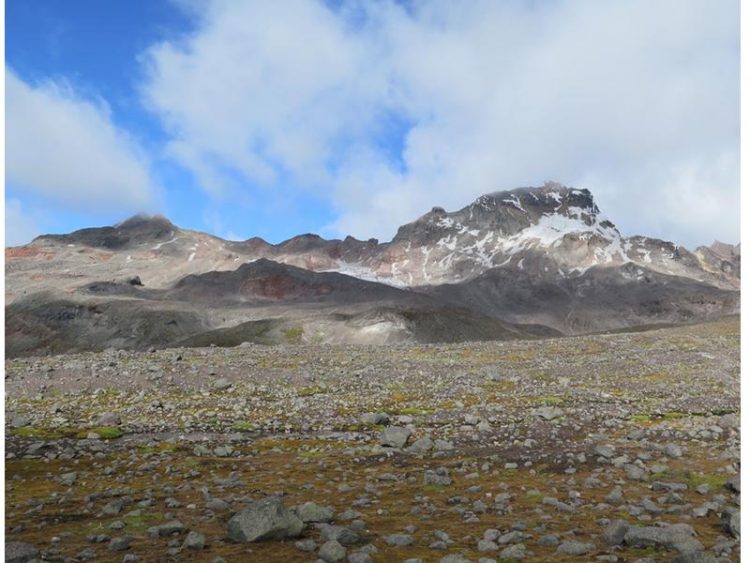The MUSE flies to Ecuador

Retreating glaciers on volcano Mount Carihuairazo photo Pierre Moret
An international scientific field research in the Ecuadorean Andes recently started. The expedition, coordinated by Dr. Pierre Moret, from the French “Centre National de la Recherche Scientifique” (CNRS), aims at developing a long-term project intended to monitor changes in the biodiversity of insects living on the retreating glaciers of the Pyrenees and the Andes, as well as their risk of extinction.
The research project is entitled “Les Insectes du sol, marqueurs de l’anthropisation et du changement climatique en haute montagne: étude comparée dans les Pyrénées et les Andes” and after a first stop in the Pyrenees last summer, the researchers now turn their attention to the Andes.
The entomologist Mauro Gobbi, a researcher from the MUSE – Science Museum of Trento (Italy), will take part in the expedition, which will see the participation of the Pontificia Universidad Católica del Ecuador.
Insects, and especially beetles, that live at high-altitude are among the first organisms to be affected by climate change. For this reason, they are excellent environmental indicators for the assessment of the impact of climate change on our Planet.
The program of the expedition, which will last 3 weeks, includes the study of those species that live at the margins of glaciers located on six volcanos, among them the renowned Chimborazo (6268 m) and the Antisana (5704 m).
Part of the expedition will retrace the routes travelled by the great naturalists and alpinists of the late 800s, such as Alexander von Humboldt and Edward Whymper, who collected samples of insects and gave exceptionally detailed descriptions of the place, altitude and date of discovery.
Mauro Gobbi and the team of researchers will collect new samples of insects in the same locations where these naturalists once conducted their field surveys. Through the use of modern analytical techniques, they will be able to detect and analyze changes in the communities of insects over time and with relation to the retreat of glaciers. The expedition is endorsed by the Club Alpino Italiano (section of Val Comelico) and supported by the technical sponsor Calze G.M. Sport srl.
For more than fifteen years, the researcher Mauro Gobbi from MUSE has been studying and monitoring the variety and risks of extinction of insects that live on the surface and at the margins of Alpine glaciers. He was involved in this project, co-financed by the CNRS, because of his remarkable experience on the Italian Alps, in order to apply his knowledge and investigation methods to extra-alpine environments.
Media Contact
More Information:
http://www.muse.it/it/Pages/default.aspxAll latest news from the category: Life Sciences and Chemistry
Articles and reports from the Life Sciences and chemistry area deal with applied and basic research into modern biology, chemistry and human medicine.
Valuable information can be found on a range of life sciences fields including bacteriology, biochemistry, bionics, bioinformatics, biophysics, biotechnology, genetics, geobotany, human biology, marine biology, microbiology, molecular biology, cellular biology, zoology, bioinorganic chemistry, microchemistry and environmental chemistry.
Newest articles

Combatting disruptive ‘noise’ in quantum communication
In a significant milestone for quantum communication technology, an experiment has demonstrated how networks can be leveraged to combat disruptive ‘noise’ in quantum communications. The international effort led by researchers…

Stretchable quantum dot display
Intrinsically stretchable quantum dot-based light-emitting diodes achieved record-breaking performance. A team of South Korean scientists led by Professor KIM Dae-Hyeong of the Center for Nanoparticle Research within the Institute for…

Internet can achieve quantum speed with light saved as sound
Researchers at the University of Copenhagen’s Niels Bohr Institute have developed a new way to create quantum memory: A small drum can store data sent with light in its sonic…





















